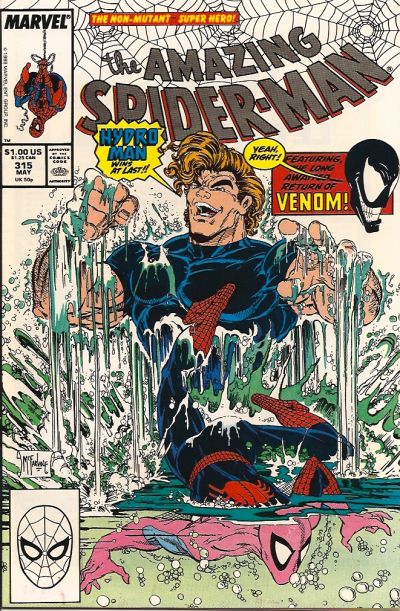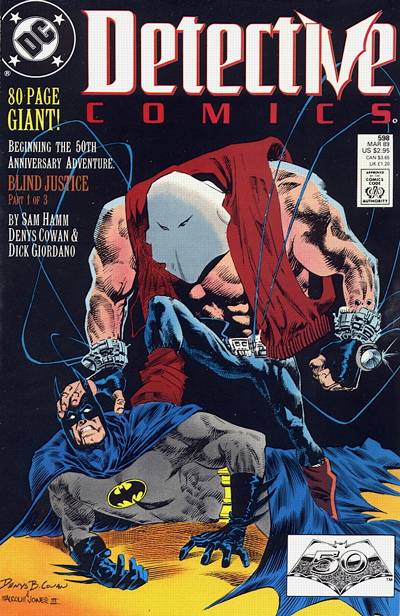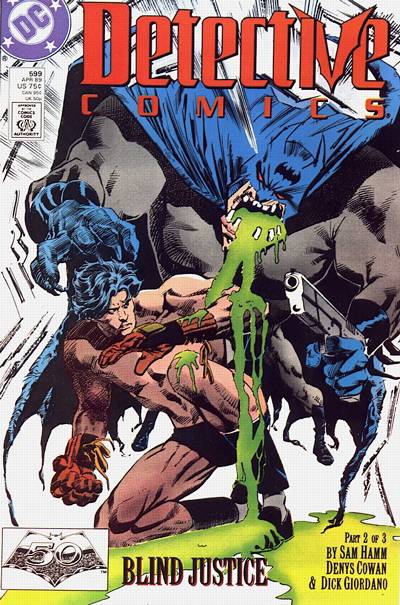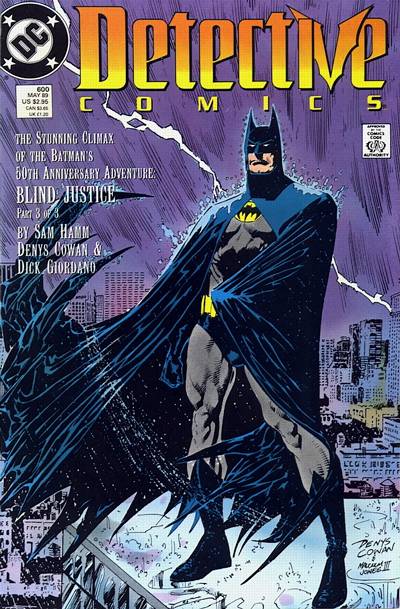
“Eclipse of Reason” (22 pages)
Plotter: Alan Brennert
Scripter: Martin Pasko
Artists: Luke McDonnell & Tom Palmer
Letterer: Joe Rosen
Colorist: Carl Gafford
Editor: Louise Jones
Editor in Chief: Jim Shooter
Cover artists: Joe Brozowski & Tom Palmer
This issue is notable in that it’s one of the first comic book credits for Alan Brennert, who has written many fine novels and episodes of TV series like the 1970s Wonder Woman, Buck Rogers in the 25th Century, The Twilight Zone and L.A. Law, for which he won an Emmy award in 1991. He also wrote episodes of Stargate Atlantis and Star Trek: Enterprise under the pen name Michael Bryant.
It’s clear this is a pretty difficult comic to write for, mostly because too many of the scripters are trying too hard to do a TV episode instead of a comic. It’s also a good example of the original series format creating too much of an echo chamber. There’s a lot of repeating in these stories and not a lot of original ideas coming through. Not that that’s not normal for comic books, but it’s not done with sufficient energy or verve to work here.


The art struggles to keep up with the story. There’s some very nice work here as far as likenesses. Palmer, clearly, has a few moments to shine. But the rest of the story lacks clarity and dynamism, and in a few places, just looks like it was done under rushed circumstances or by an artist whose skills weren’t up to the task of, say, drawing the Enterprise correctly.
Storywise, this issue sees yet another Kirk romance gone sideways as he learns his former yeoman, Janice Rand, has fallen in love with and married a being of pure energy named Kadan of Phaeton. Kadan is captain of the USS Icarus, which is tasked with exploring beyond the energy barrier at the edge of the galaxy. Rand is going along with Kadan on this mission as the lone human aboard, tasked with doing what the bodyless Phaetonians cannot. The mission will take 1,000 years, so Rand will live out the rest of her life aboard the Icarus, with her husband, who will outlive her by many hundreds of years.
Sad, no?

The Enterprise regulars check out the Icarus to ensure it’s in good operating condition. Kirk confronts Rand about her radical choice, reminding her that she’s a woman and her husband doesn’t even have a body. (Kirk’s nothing if not subtle, right?)
After the farewell, the Enterprise heads off to its next mission, while the Icarus hits the barrier and it drives the Phaetonian’s insane and makes Rand telepathic.

Now, this is where you have to wonder about this plot. Clearly, everyone in this story remembers what happened when the Enterprise tried to pierce that barrier in the classic second pilot of the series, titled “Where No Man Has Gone Before.” That was the episode where Kirk’s best friend Gary Mitchell, played by Gary Lockwood, gains god-like abilities when the ship tries to pass through the barrier. He’s joined shortly thereafter by Dr. Elizabeth Dehner (Sally Kellerman), and Kirk is forced to kill them both before their powers go out of control. It was one of the best episodes of the show, and one whose message would be hard to ignore. But ignore it Starfleet does, and the results are equally disastrous.
Rand seeks out Kadan for help, only to find he’s gone mad and is projecting an image of what his body-bearing ancestors once looked like into her mind for added effect.
The Icarus quickly destroys a cargo vessel and heads on a direct course to the Phaetonian homeworld. Far away, Spock receives a telepathic message from Rand and passes on what has happened to Kirk, who cancels his current mission to help out.

Aboard the Icarus, Rand is trapped on the bridge when the crew shuts down the turbolifts and drives the ship into a “white hole.” The Enterprise follows and both ships enter a strange dimension and attempt to disable each other with phaser fire. Rand gets a signal through and tells Kirk the Phaetonians are like salmon swimming upstream — they want to return to their home planet and “land” the Icarus, meaning it’ll crash into the surface and the anti-matter explosion will kill billions.
Kirk, Spock, McCoy and Chekov beam over through a hole Scotty shoots in the Icarus’ shields and are trapped there as the Icarus damages the Enterprise and is able to speed off.

The Icarus itself starts fighting the crew, which it has to because the Phaetonians have no bodies. That means force fields enacted, artificial gravity giving out and training devices attacking the crew.

Rand detects her old shipmates and crawls through a Jeffries tube to reach them, while Scotty prepares the Enterprise crew for his new orders: Ram the Icarus to prevent it from reaching its homeworld.
Spock and Rand manage to telepathically communicate with Kadan and help him regain his senses at the same moment Kirk turns the gravity and life support back on — just in time to avoid a ramming from the Enterprise.

The story ends with less than a page explaining that the Phaetonians are off to an asylum on Elba II. Rand’s decided to seek an annulment and asks Kirk if she can have her old job back as the Enterprise transporter chief.

Rand’s story ends worse than it began. I get why that happens — characters like that might always be needed in the future and so you can’t really send them off on a 1,000-year mission. But nothing is added to her story. Her relationship with Kadan isn’t believable, nor her continued pining for Kirk. The captain fares no better, coming off as a complete jerk who expects Rand to be available to him on an ongoing basis — even though he has no intention of being with her at all.
And nobody else in this issue gets any more than that. The title lacks any kind of emotional connection with or between its characters and I can’t imagine that anyone other than a die-hard Star Trek fan finding much to enjoy with it.
I will add that this is one of several Marvel comics published this month that features the little gag at the end called “The Former X-Men,” which is a parody cover of The Uncanny X-Men #142’s cover. Cute.

One year out from the start of this series, it’s not looking good for its future. Star Wars was riding high, based on the success of The Empire Strikes Back and the anticipation for Return of the Jedi. It was hard at this time to think much of Star Trek: The Motion Picture or the future of Star Trek as a franchise, as The Wrath of Khan was still a year and a half away. But Marvel had another year on its license, so the comic book was still on track to publish through 1981.





























































